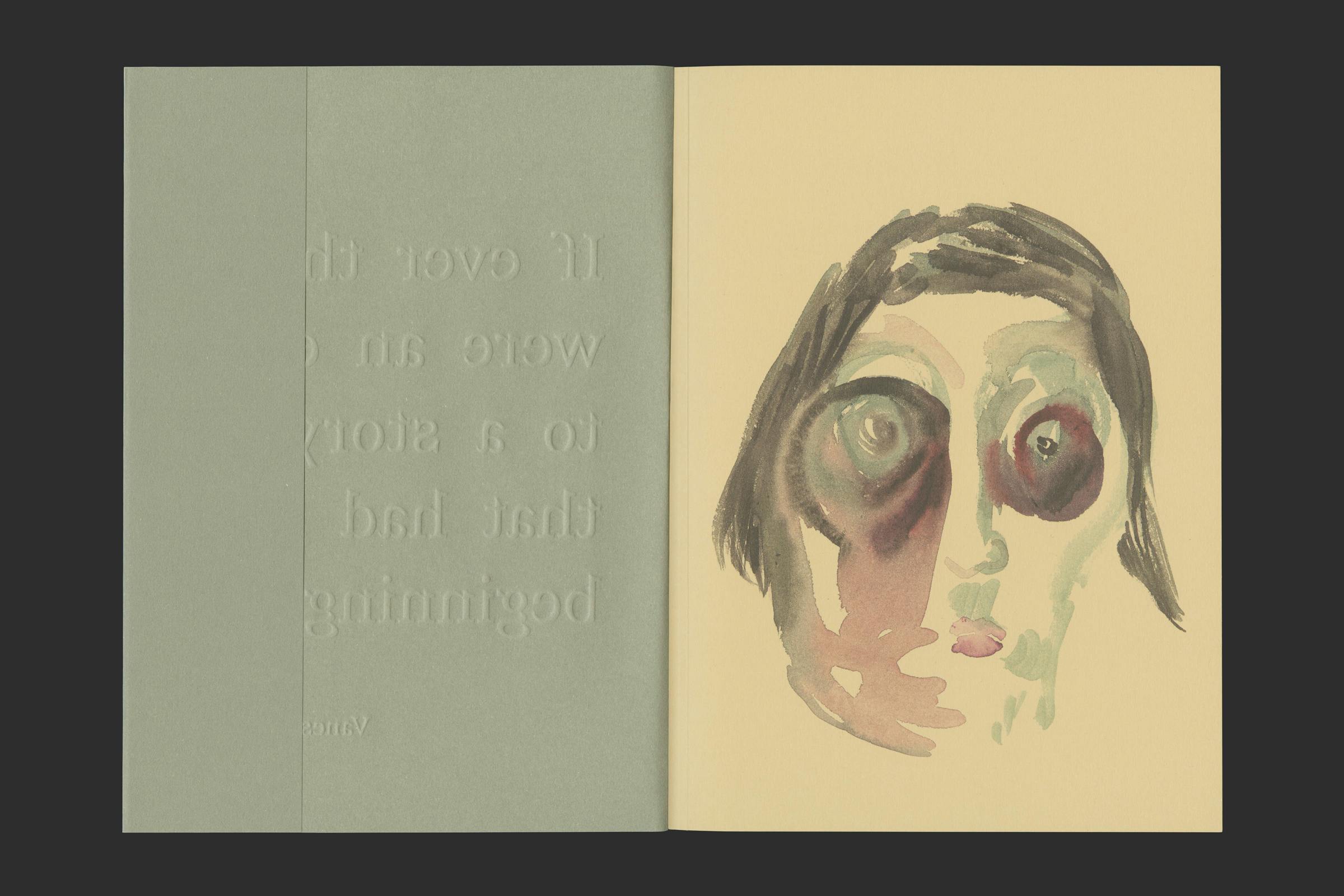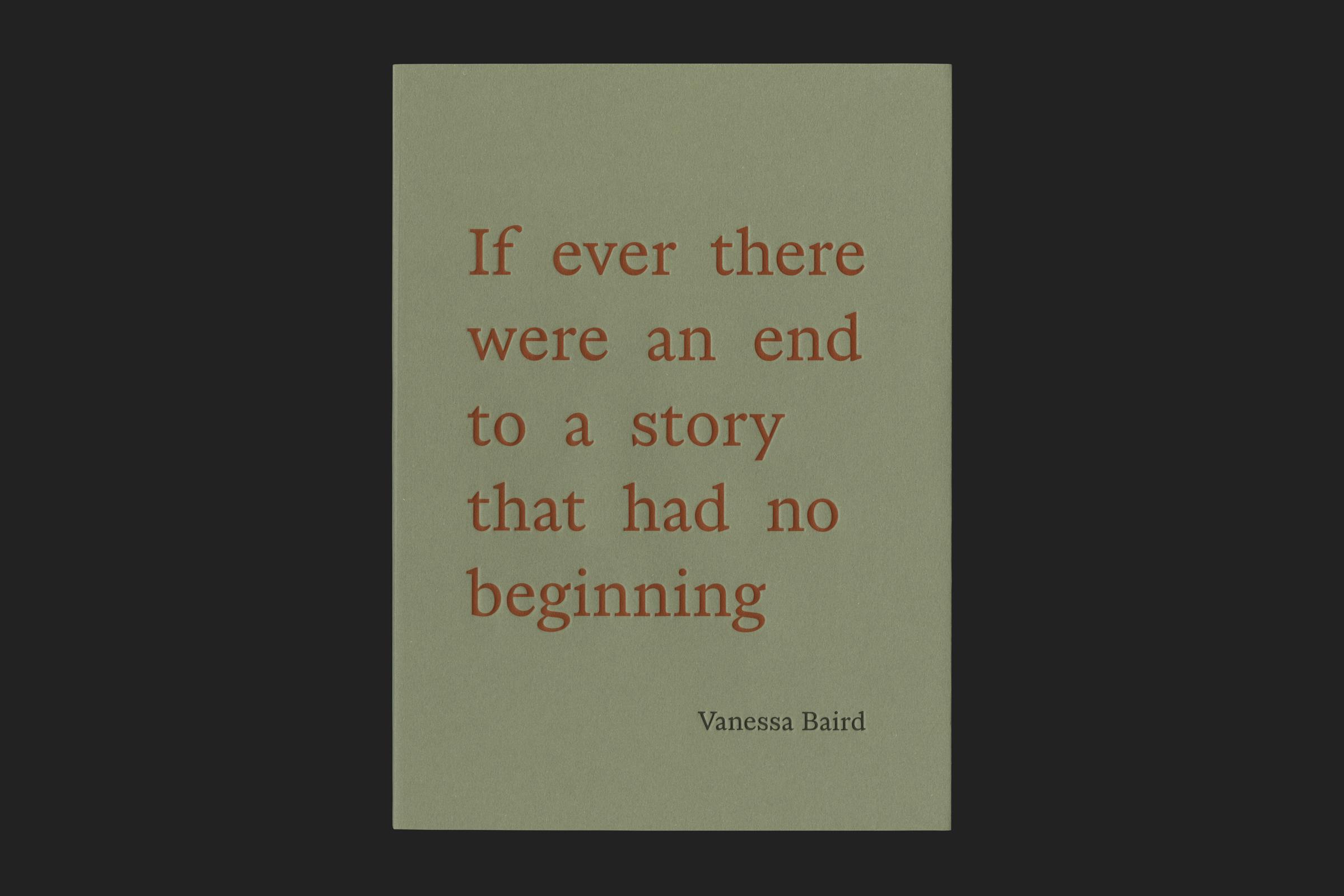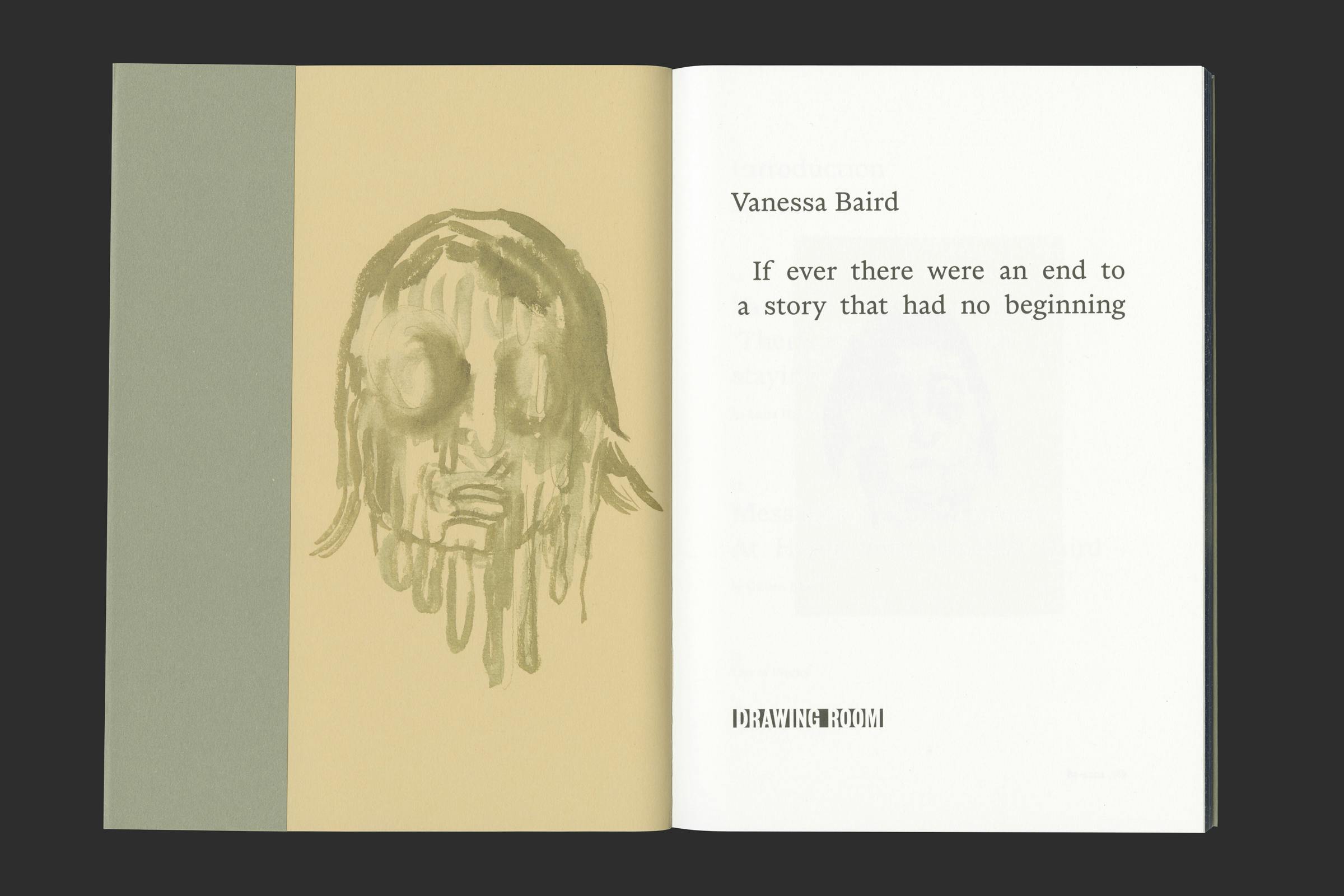
Vanessa Baird: If ever there were an end to a story that had no beginning
1/3
Accompanying Vanessa Baird’s first solo exhibition in the UK. This publication introduces Baird’s world through a selection of extraordinary drawings produced over the last six years, including an immense wall-size seascape created for the show represented in the publication as a double page gatefold.
Baird captures the states of exhaustion, boredom and frustration that accompany the everyday tasks of looking after a household, conjuring up the chaotic detritus of domestic life in a kaleidoscope of provocatively raw imagery. Portraying herself with honest vulnerability, as a mother, daughter and carer, explicitly describing the taboo subjects of intimate bodily functions and the ageing female body.
Her work is underpinned by a dark sense of humour, with scenes made more menacing by Baird’s use of pictorial foreshortening and angled perspectives; her figures are compressed into claustrophobic spaces that draw the viewer unavoidably into nightmarish psychodramas.
The poetic jacket uses the muted tones of the more crude subject matter. Beneath the jacket the physical impression of the title is revealed, as well as the hidden images of Red Herring Prednisolon ciclosporin, 2014–18, a series of intimate self-portraits, made over a period of four years whilst the artist was being treated for a chronic illness.
Exhibition
23 March – 9 May 2021
Co-curated
Mary Doyle and Gillian Fox
The publication takes inspiration from folklore and children's literature, themes often found in Baird’s work. Typeset throughout in ABC Marist*, the typography embraces the exaggerated word spacing in titles and a longer line length in the body text. Illustrated plates are positioned with some movement around the page in a similar tone to the referenced literature.
Cover
Softback
Format
170 × 240 mm
Extent
80pp
Binding
Section sewn
Typeface
ABC Marist
* ABC Marist was designed by Seb McLauchlan and released by type foundry Dinamo in 2020. Its creation is inspired by following the history and legacy of the often overlooked (and sometimes maligned) Old-Style genre. From early developments in Italy under Nicholas Jenson, revivals under William Morris at the Kelmscott Press, the Dove Type Foundry and others, to its more successful cousins like Stanley Morison’s Times and Plantin. Tracing a loose path across these various spots in the canon to find a contemporary interpretation.

